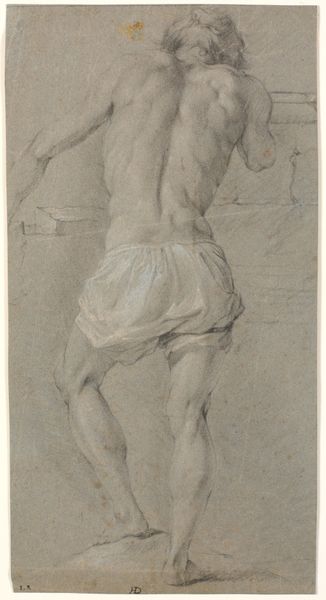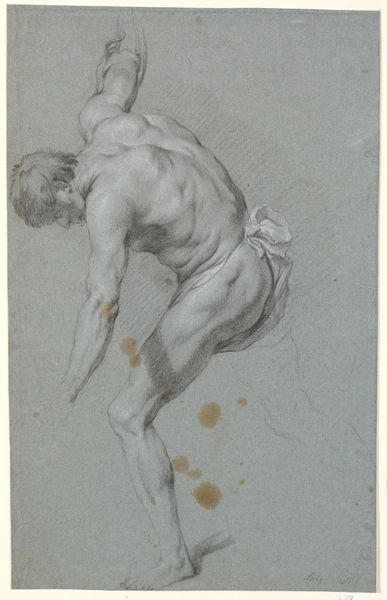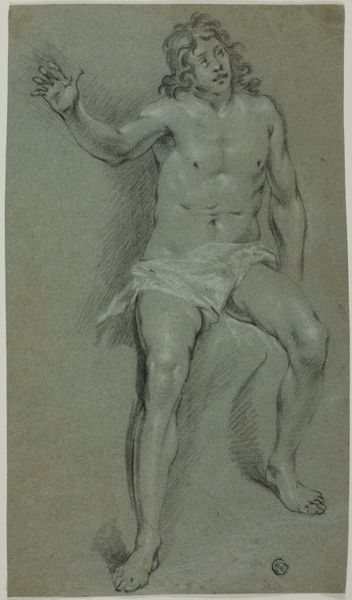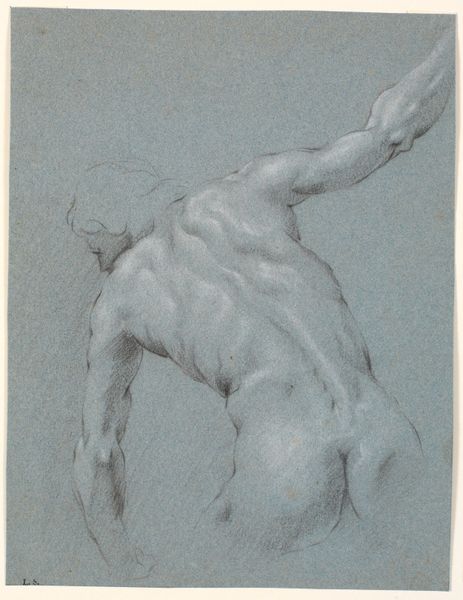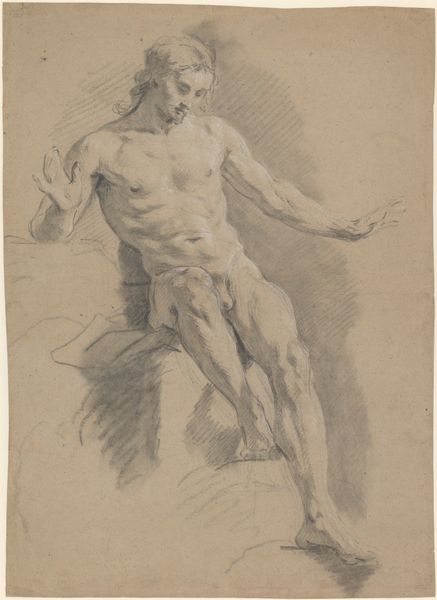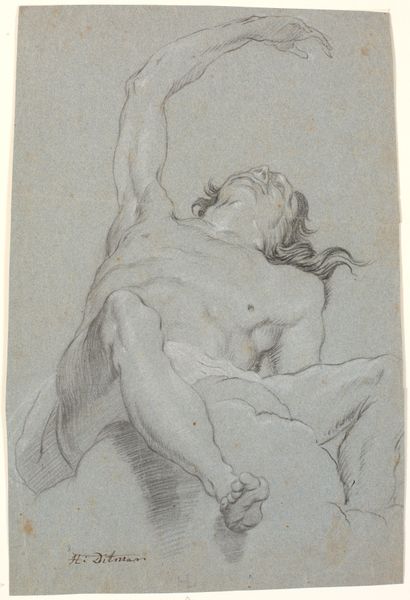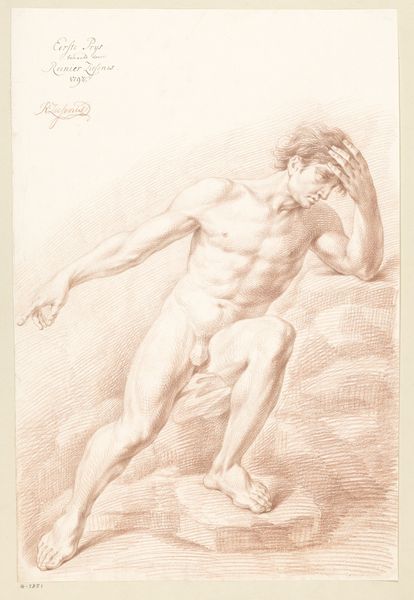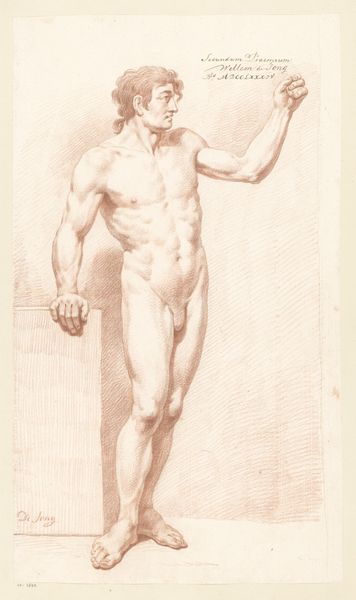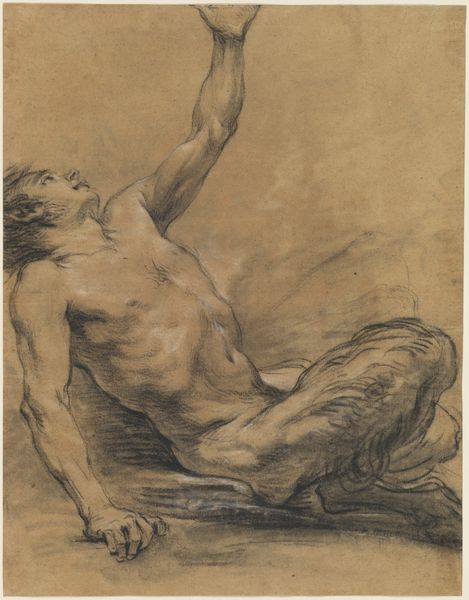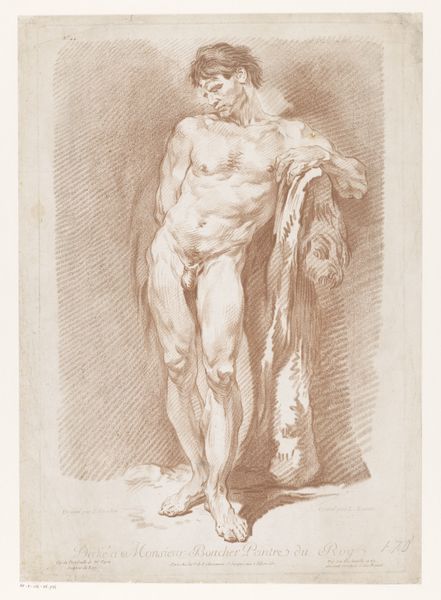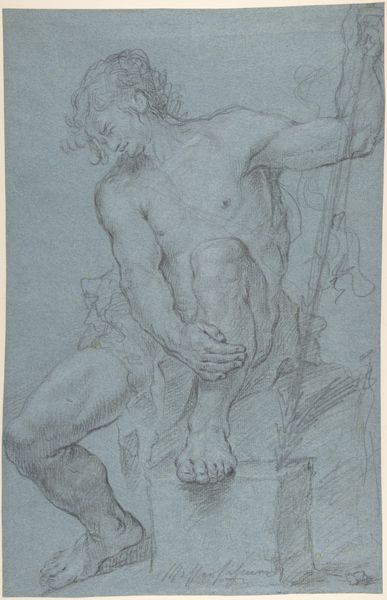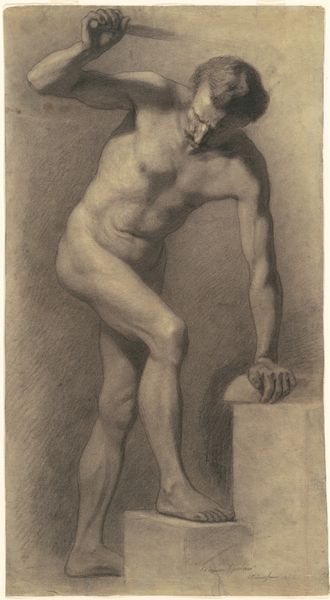
Tilbagelænet, stående mandlig model, lænket til et alter 1625 - 1677
0:00
0:00
drawing, charcoal
#
drawing
#
baroque
#
charcoal drawing
#
figuration
#
pencil drawing
#
charcoal
#
nude
Dimensions: 351 mm (height) x 219 mm (width) (bladmaal)
Curator: Welcome. We're looking at a drawing by Heinrich Dittmers titled "Tilbagelænet, stående mandlig model, lænket til et alter," placing it somewhere between 1625 and 1677. The medium is charcoal. Editor: It evokes an immediate sense of vulnerability. The figure, muscular yet chained, projects an odd mixture of power and utter helplessness. Curator: The baroque aesthetic is certainly palpable; you notice it particularly in the dynamism of the pose, the chiaroscuro effects achieved through charcoal, and the rendering of the male form. Editor: Absolutely, and I can't help but think about the social narratives inherent in the objectification of the male nude in art. There's this almost ritualistic vulnerability. Are we invited to sympathize, or is this an exposition of male power rendered temporarily helpless? Who is he, what is his crime? The binding adds layers, creating tension between liberty and constraint. Curator: The use of charcoal is extremely effective in creating shadow, light and form, structuring the work so as to almost vibrate with muscular tension and movement even as the figure is posed quite rigidly against the altar. The application of drawing media adds to this vitality as does his expressive though somewhat formal anatomical rendering, true to period convention. Editor: Dittmers definitely invites consideration of masculine identity as something perpetually challenged and negotiated. How the art reflects broader cultural anxieties concerning masculinity. I can't help but question the very foundations upon which our art-historical canon is built. Curator: Dittmer's drawing showcases the interplay between control and dynamism, a conversation central to Baroque artistic expression. Editor: Considering the drawing through these lenses broadens how we interpret artistic pieces from the Baroque era and adds new depths to its artistic interpretation. Thank you.
Comments
No comments
Be the first to comment and join the conversation on the ultimate creative platform.
